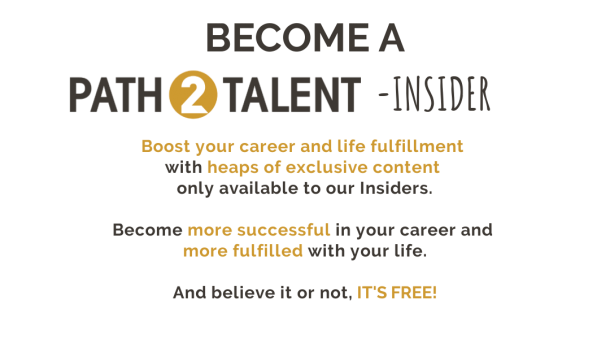EXECUTIVE SEARCH. HOW HAS CHANGED IN 20 YEARS?
Let me start with this claim: I joined the executive search and headhunting business in 2002, so the below views and opinions are coming from a “recruitment veteran “ 😊
When I started in Executive Search, there were only a few female Executive Search Consultants, very few. And even fewer of them were under the age of 45. So, when I started at the age of under 30, I felt like a “little girl” in a club of “big boys” in the headhunting business. When I joined our international conferences, where we met with colleagues from all around the world, I was the youngest one and let me tell you: it did not feel good at all!
How did we do executive search 20 years ago when LinkedIn did not exist yet?
Can you imagine?
The job back then was much more demanding. We had huge databases of candidates and I still remember when new potential clients were asking me about the number of profiles in our database as a main criteria for working with us 😊
Ready for hiring?
This free document contains best practices to tackle and avoid common recruitment challenges.
Because in order to succeed, we needed to have either personal contacts to excellent candidates, huge database or skilled researcher with the abilities of an FBI agent. Ideally all of those.
Researcher could have read in newspapers, that there was a new CEO nominated for a certain company, so he was tracking that kind of data in a databases,(we did not call it BIG DATA those days) which as you can imagine, became quite soon old. So, when he called the candidate let’s say a few years later, the candidate was already with another company.
To be able to identify right candidate, we were calling company switch boards and asked to be connected with the right people, e.g. a person responsible for marketing. We did not have their CVs in font of us, we were just trying to identify the right people, with the right responsibilities and then asking them if they would be interested in some new opportunity.
Executive search used to be like the work of an FBI agent
It’s been an exhausting job. Just like an FBI agent, searching with nothing to go on, getting leads and tips 😊, going for lunches with the network and asking for referrals.
To reach the right people was another struggle, since we did not have their direct phone numbers. That meant that we had to call several times to get a hold of that person. Sometimes their assistants would get suspicious and have difficult questions, and we had to actually be quite innovative when it comes to the reason of our call. After all, we were trying to snatch the candidate away from their current employer.
Oh boy, I am so glad those days are over!
I always appreciated the job of our researcher, he was amazing and he even liked it ….And me as a consultant, I was highly dependent on him.
In those days, best headhunters knew people personally. So, going for events, dinners, lunches, golf etc. was a necessity in those days.
And the older you were, the more contacts you would have under your belt 😊
And how do we search today?
With the launch of LinkedIn and similar platforms, all industry and ways how we handle the research process have changed dramatically. That much that some traditional headhunting companies could not cope with the change.
Today platforms like LinkedIn or Xing are our most important tool. And everyone has a best assistant called Google. Plus we have some other tools depending on country and location, where you can find company info, main shareholders, management contacts etc.
Knowing the tools is the key to good executive search
Nowadays the whole research is done in a much shorter time. You need to be good with tools, have huge patience to sit behind the screen, and we definitely don’t need to golf or go to the events 😊
We can identify the right candidate from behind our screens and get in touch with them very promptly, without the need to call their curious assistant or their current company’s switch board.
And even when they are on the other side of the globe, thanks to social media we can easily get in touch with them. We arrange video interviews and get connected easily. Everyone has internet at home and mobile phone with all possible applications.
Executive search now and then
So how would I compare and summarize the headhunting 20 years ago and now?
- BACK THEN it was all about having contacts to the right people. The biggest challenge was to identity the right candidates and get in touch with them. Since there were none or just one career platform like monster, where you could find a job back those days, candidates were grateful to receive a call from me, because we had the roles which were not advertised, confidential searches and mostly senior level and executive type of roles. We had very little info about the company, we knew about the role in general, but nobody was expecting me to know too much about the client’s business. Company pages were not so detailed and in general, clients were not so open to share important facts from their business, only the necessary ones for me to succeed.
- NOWADAYS it’s about attracting the right people. To identify them is much easier, but to attract them to the company is not. That´s where you need to have a skilled Consultant who is good to “pitch” and sell the opportunity. And we need to know much more than just the role requirements. We need to know the business much better, to be able to influence and attract. Today it is more of a candidate market, they are asking “why shall I change”?
- EARLIER we needed much longer time to deliver the results. Just imagine how many weeks we needed to get hold of a potential candidates only. So the length of the whole search has shortened now. At least should have 😊 If not, then I recommend you to change your headhunter, seriously…
- BACK IN THE DAYS, we mostly worked very locally. Not even on a country level, so clients were often choosing headhunters who knew their region, and had contacts with candidates locally. To search a candidate in another region across the country has been usually much more challenging. Even the interviews, since we were meeting all of them in-person, since we did not use all video meeting tools back then. Nicely dressed, here I went to meet them.
- And nowadays? Here is maybe the biggest change that happened. Since I can identify and contact candidates all around the world, my work has expanded hugely during the last years. I have been searching across several countries and had candidates from all around the world, doing video interviews late at night with candidates from USA or in the early morning with Asia. NOWADAYS the world has become my playground. There are always some challenging roles in remote locations, where you definitely need a local partner. But most often my clients have their locations in big cities and thus it has been easy to succeed.
- Another change is in the recruitment method we choose. BACK IN THE DAYS, if there were technical and specialists roles, we were advertising them and people were applying. There was mostly just one career portal per country 😊 So, everyone knew where to go. Headhunting was the primary method for hiring executives.
NOWADAYS, when advertising, we need to use zillion of channels and good candidates mostly do not apply and nowadays we do headhunt often for specialists roles, technical roles etc. AND we can see advertising for very senior management roles, if the company has a good employer branding. So it all changed and the market became a real candidate market, where we need to attract them and it’s not anymore about clients choosing the candidates but often vice-versa, Candidates are choosing the employers!
Thus the whole interview process has changed too. But more on that next time…it’s a topic of its own.
Thank you for reading this far and if you like it, please give us a like or share. Or let us know about your experience from this area. If you are old enough, you surely remember how it was 20 years ago…
With passionate regards ,-)

P.S. If you like this post, feel free to share it with your friends! You find the sharing buttons on the left side of the screen. And you will find more exciting posts like this also on our blog.
Ready for hiring?
This free document contains best practices to tackle and avoid common recruitment challenges.
Perfect kick-off to your recruitment
This free kick-off template helps you get clearer on your recruitment process and to take many initial steps on your own.

The author
More relevant posts
RECRUIT LIKE AN INVESTOR
Usually, when companies hire, they want to play it safe. But only if you are willing to take a risk, like an investor, you can truly win big.
Recruitment biases and objectivity
How to minimize or eliminate the influence of biases? Biases affect us all. When it affects our judgment at work, we face a serious issue.
Almost One-Fourth of us is Planning a Job Change
One quarter ready for a job change – that is a strong statement. Let´s have a look at the following surprising numbers!







